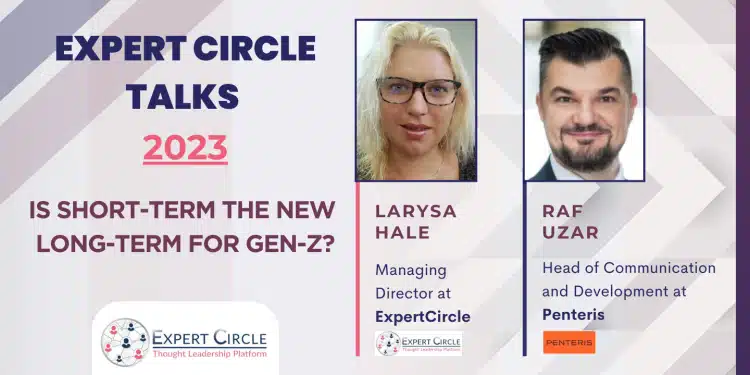In the fast-paced world of recruitment, staying ahead of the competition requires strategic communication. Crafting an effective press release can be a powerful tool for recruiters looking to enhance their... Read more
Category: HR & Recruitment
Decoding AI in Recruitment: Spotting ChatGPT in CVs – 7 Unmistakable Signs
In today's AI-driven job market, an eye-opening trend is unfolding. A recent poll reveals that a robust 88% of job seekers are leveraging Artificial Intelligence (AI) tools for their career... Read more
Is short-term the new long-term for Gen-Z?
We recorded an intriguing discussion on whether the short-term is the new long-term for Gen Z. During the discussion, we arrived at some fascinating conclusions. About the speakers: Raf Uzar... Read more
Investing in Gen Z Interns: why it’s a smart move for Professional Services
As someone who graduated from university 17 years ago, I know what it's like to feel unsure about what to do with your career. Although I had some work experience... Read more
Why negotiations are important & who can negotiate with whom
Negotiation skills are essential for both applicants and current employees in the workplace. This article offers tips for both parties to improve their negotiation techniques. With 68% of US employers... Read more
5 tips on how to help your team deal with burnout
Burnout is a serious problem that many teams are currently grappling with. The stress of deadlines, long hours and lack of recognition can cause team members to become overwhelmed and... Read more
Salary Transparency or Company Downfall?
Should Job Post Include Salary Rates? The hiring market debate has included salary transparency and if they are beneficial to the applicant but detrimental to the business. The decision of... Read more
Expert Panel: What is one change you recommend making to enhance culture and productivity
There is a lot of noise about culture, productivity and building a productive workplace culture. However not too much information about what does that really mean? And how do organisations... Read more
Expert Panel: Hybrid working – What is the best model to move forward, how should time be split between home and office?
The hybrid working model is a location-flexible arrangement, allowing employees to combine onsite and offsite work as they and their employers see fit. Following the lifting of COVID lockdowns worldwide,... Read more
Hybrid working: how to make it work for your organisation
Unlocking Hybrid The key to unlocking “hybrid” is understanding the real reason for wanting to implement it. Are we offering a hybrid working arrangement to pay lip service to a... Read more
The three phases of Management Consulting Recruiting
A career in management consulting is a dream for many people. Ashlyee Freeman shares a bit of her consulting recruiting journey with us, so you’ll know where to start and... Read more
Expert Panel: How to Reach Out to a Recruiter
The job search process is complex and requires engaging with several key stakeholders. Recruiters are a good example of this and play an important role in helping you research and... Read more
How do you delegate tasks to your team – Expert Advice Series
Our guest Expert Georgina Bale – CEO, Bower Group is here to share her expertise answering the following questions: What’s your approach to the delegation with employees? How do you... Read more
















